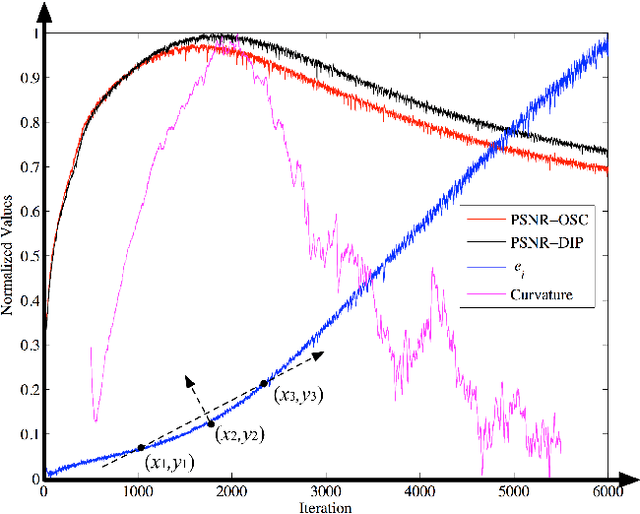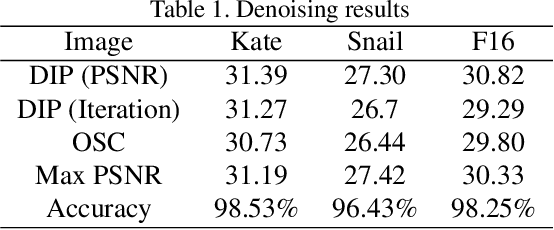Towards the Automation of Deep Image Prior
Paper and Code
Nov 17, 2019



Single image inverse problem is a notoriously challenging ill-posed problem that aims to restore the original image from one of its corrupted versions. Recently, this field has been immensely influenced by the emergence of deep-learning techniques. Deep Image Prior (DIP) offers a new approach that forces the recovered image to be synthesized from a given deep architecture. While DIP is quite an effective unsupervised approach, it is deprecated in real-world applications because of the requirement of human assistance. In this work, we aim to find the best-recovered image without the assistance of humans by adding a stopping criterion, which will reach maximum when the iteration no longer improves the image quality. More specifically, we propose to add a pseudo noise to the corrupted image and measure the pseudo-noise component in the recovered image by the orthogonality between signal and noise. The accuracy of the orthogonal stopping criterion has been demonstrated for several tested problems such as denoising, super-resolution, and inpainting, in which 38 out of 40 experiments are higher than 95%.
 Add to Chrome
Add to Chrome Add to Firefox
Add to Firefox Add to Edge
Add to Edge